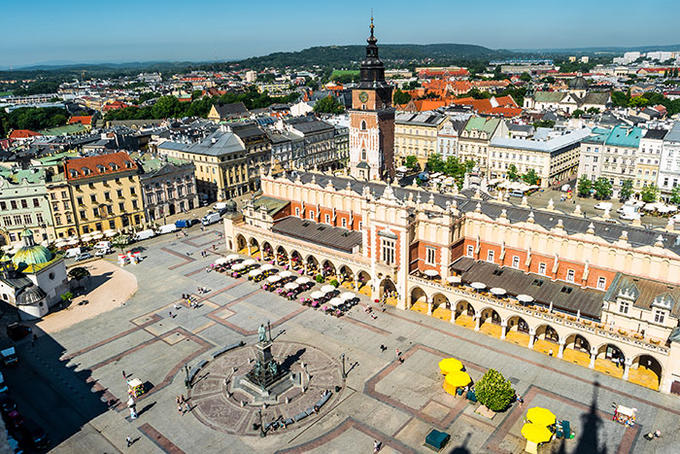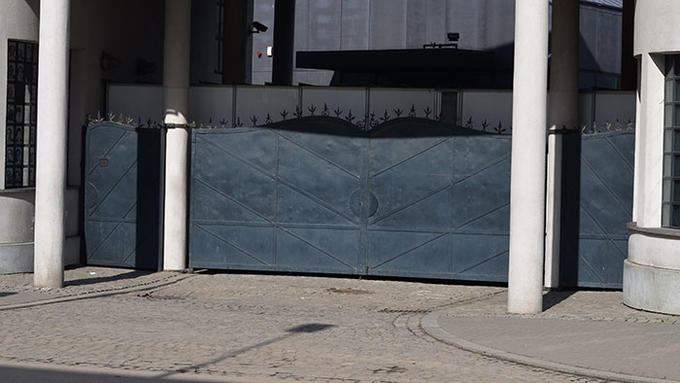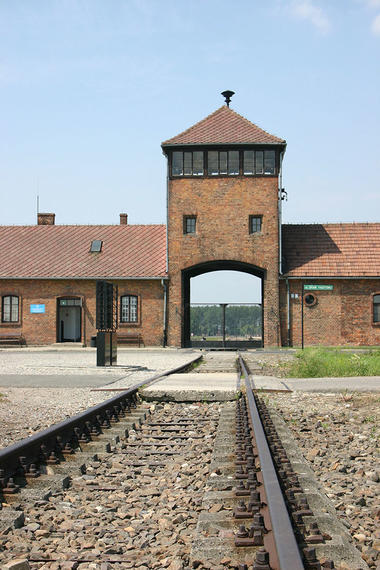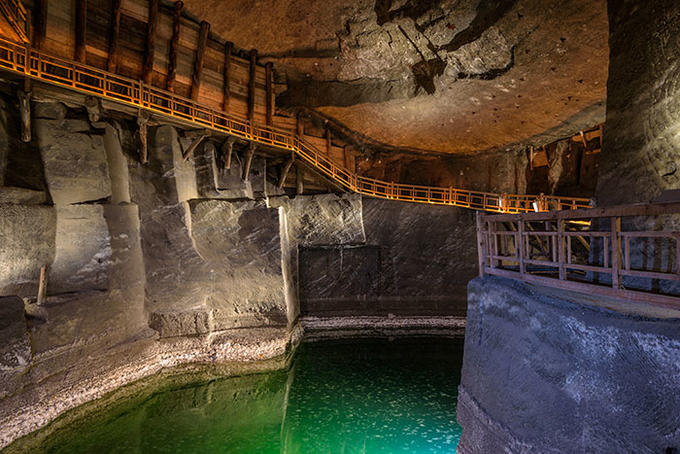A City Break Guide to Krakow, Poland
Dripping in Gothic grandeur, a buzzing medieval market square and founded on a legendary dragon slaying: Krakow is city ripped straight from a Brothers Grimm fairytale. For any traveller, you can't help but notice this layered, mythical history filter through its streets and facades – I certainly did when I visited. I returned feeling spellbound, humbled and itching for more, all in equal measure. Here's my tips on how you make the most of your time there:

What to do
Wawel Castle
Rising up on a limestone hill on the outskirts of Krakow's Old Town, Wawel Castle is one of the most important buildings in Poland. Home to countless monarchs, the resting place of some of the country's biggest figureheads and spilling with cultural treasures and gilded craftmanship, the complex is a mecca for locals and a must-see for visitors. It's a seamless mix of impressive Gothic, Romanesque and rennaissance architecture, rolling Buckingham Palace and Westminster Abbey into one. With so many different slices of the complex to explore – the State Rooms, Cathedral, Treasury & Armoury, Private Apartments and Dragon's Den – it's hard to know where to start. The important thing to remember, though, is that you don't need to have seen every bit of the castle site to have 'done' it. Pick a couple of highlights and take your time to soak up some of Poland's regal history.

Main Square
With its status as one of the largest medieval squares in Europe, Krakow's Main Square is the city's nucleus. Fringed by pastel-coloured townhouses, it's the perfect social hub to sit down with a coffee and watch the world go by. It's not just a place for relaxed admiration however: its central Cloth Hall was once the epicentre of the city's clothing trade. Today it houses a range of fine souvenir stalls, while the overlooking St Mary's Basilica drips with intricate decorations. A climb up the Town Hall Tower – the only remaining part of the old hall – dishes up widescreen Old Town views, and for an alternative journey through its storied streets, kick back in one of Krakow's horse-drawn carriages.

Schindler's Factory
Housed in the former enamel factory of Oskar Schindler, this excellent museum goes far beyond its namesake Nazi industrialist who saved the lives of over 1,000 Jewish workers – a story made famous in Steven Spielberg's 1993 film Schindler's List. A number of exhibitions convey the Nazis' grip on Krakow during the Second World War. Though it's tucked away in the southern district of Podgórze, it's well worth the short trip there, and despite the building being left to ruin after the war, Schindler's former office has been left intact as a unique slice of history for you to see.

Kazimierz District
Kazimierz was the thriving Jewish Quarter of Krakow for 500 years before the Holocaust extinguished most of its population. The neighbourhood had been left to decay over several decades, and Kazimierz was in danger of being forgotten about altogether, but thankfully it bounced back in the 1990s when the Soviet Union fell. Much of Schindler's List was filmed here too, so Spielberg's worldwide exposure means, today, it claims to be one of Krakow's hippest haunts. Now, synagogues and cemeteries remain as tributes to the past and quirky shops, restaurants and cafés represent an irresistible and exciting future.

Spread your wings
Krakow is exciting in itself, but it is also a good base for exploring the wider area. Many come here with a visit to the Auschwitz-Birkenau Memorial & Museum in mind, a former Nazi concentration camp widely known for the mass genocide of Jews that occurred there. While harrowing, I found it a compelling visit, essential for both extending my knowledge of what happened there, and for paying my respects to all those who lost their lives.
Just 30 minutes from the city, Wieliczka Salt Mine is a jaw-dropping subterranean network of tunnels and caves all carved from, well, salt. Intricately crafted sculptures – designed by the miners themselves, not artists – pepper each chamber, with the pick of the bunch the Chapel of St Kinga, bedecked in chandeliers, murals and even an altar.
If you really fancy stretching your legs, consider Zakopane, a popular winter resort that is just 65 miles from Krakow, and is also the Polish gateway to the Tatra Mountains. In winter it's a snow scene of postcard proportions and in summer a hikers' paradise. Wooden villas line its streets on terra firma, while a cable car zips you nearly 1,000m up its rocky slopes, serving up an epic, wild widescreen view.

How to do it
Stay somewhere close to the city's Old Town and take advantage of its compact nature. All of its main attractions are easily walkable and strolling its wide boulevards out of its medieval heart to sights like Schindler's Museum and the Jewish Quarter is a joy in itself. For day trips out of Krakow, its main bus and train station offers a range of quick and easy links, or you can arrange private tours and tickets through your Flight Centre Travel Expert in advance.
When to go
Each of the seasons bring a different twist on your experience in Krakow. The shoulder seasons of spring and autumn serve up pleasant temperatures and long days but without the throng of tourists that the summer heat draws. The mercury can nudge 40°C in peak summer, but the festivals that litter its squares and buildings show off Krakow's cultural depth, celebrating everything from jazz to pierogi (Polish dumplings). Winter in Krakow brings freezing weather but also a magnificent Christmas market and a healthy dusting of snow, making for a spectacular scene.
Get inspired for your next weekend trip with our range of Europe city breaks.




